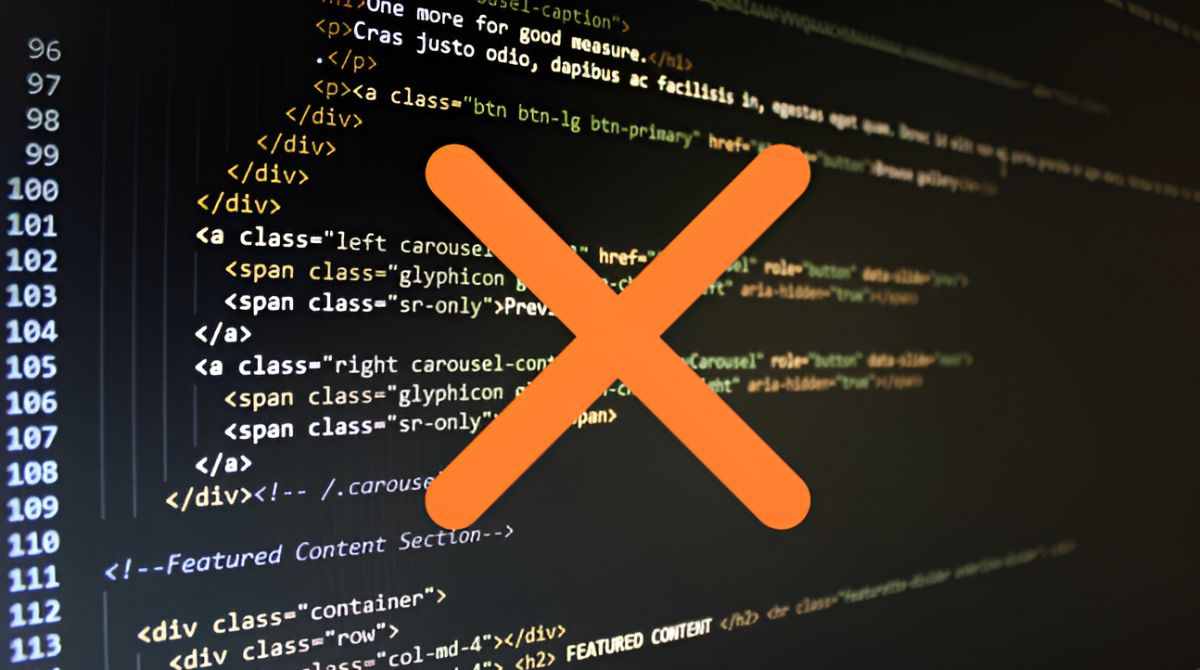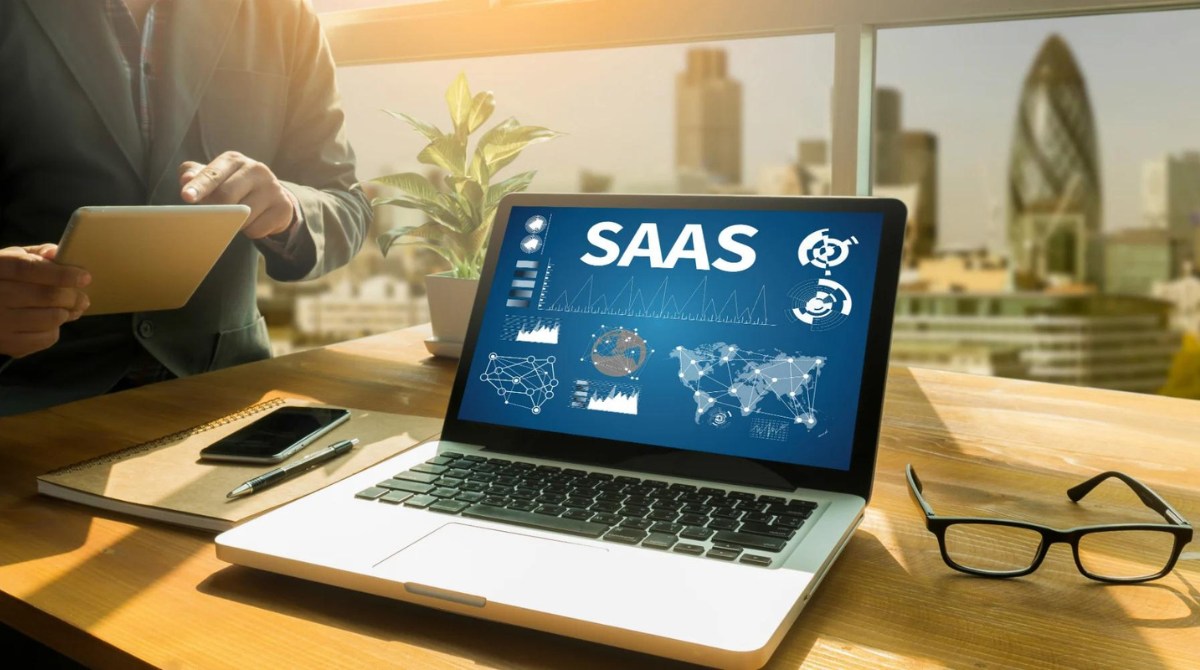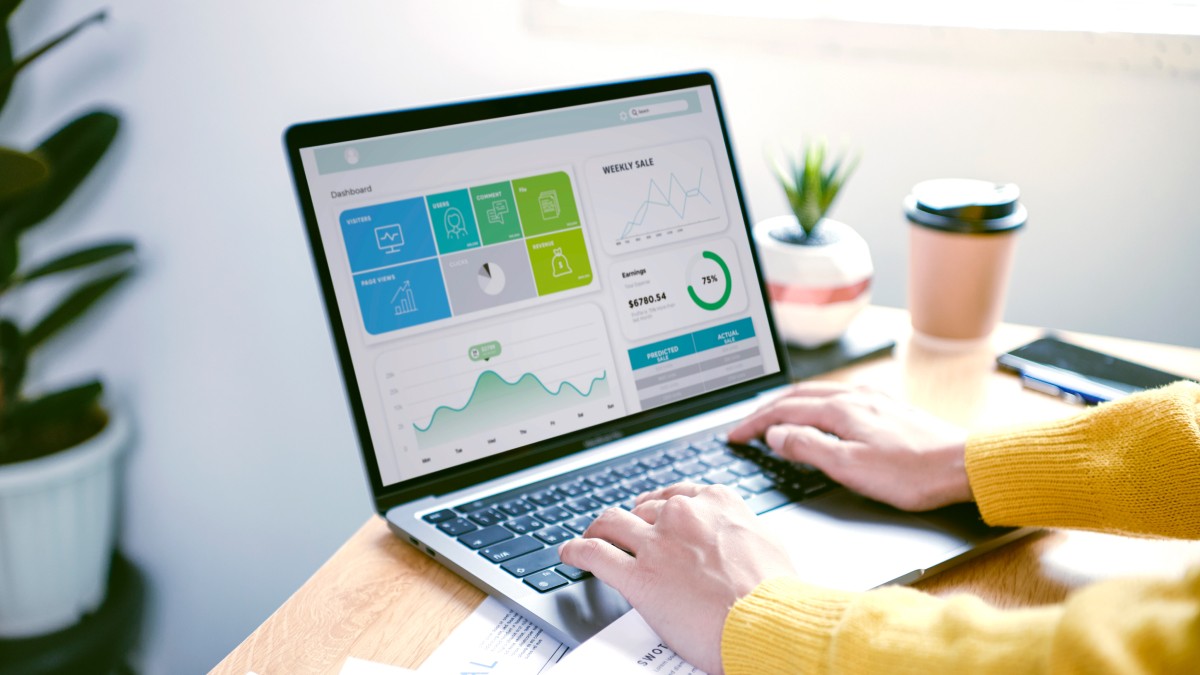Introduction
Welcome to the world of Software as a Service (SaaS) products! In today’s digital age, businesses are increasingly relying on SaaS solutions to streamline their operations, increase efficiency, and enhance customer experiences. Whether you’re a tech enthusiast, a budding entrepreneur, or simply curious about the SaaS industry, this article will guide you on how to build your own SaaS products.
SaaS, also known as cloud-based software, is a software delivery model where applications are hosted by a service provider and accessed by users over the internet. Instead of downloading and installing software on their devices, users can access the SaaS product through web browsers, eliminating the need for complex installations and updates.
Building SaaS products can be a lucrative business opportunity, with numerous benefits for both developers and users. For developers, SaaS offers a recurring revenue model, scalability, and the ability to reach a wide customer base. For users, SaaS provides cost-effective solutions, easy accessibility, and frequent updates and improvements.
However, building a successful SaaS product requires careful planning, market research, and effective execution. In the next sections, we’ll delve into the key steps involved in building a SaaS product, from identifying the target audience to launching and continuous improvement.
So, whether you have an innovative idea for a SaaS product or are looking to venture into the SaaS industry, this article will provide you with valuable insights and practical tips to help you embark on your SaaS product journey. Let’s get started!
Definition of SaaS
To understand how to build SaaS products, it’s essential to have a clear definition of what SaaS actually means. As mentioned earlier, SaaS stands for Software as a Service. It is a software delivery model where applications are hosted by a service provider and accessed by users over the internet.
In a traditional software delivery model, users would purchase or download software and install it on their local devices. This required regular updates, maintenance, and compatibility management. With SaaS, however, all these responsibilities are taken care of by the service provider. Users can access the software via a web browser, eliminating the need for manual installations and updates.
One of the key characteristics of SaaS is its subscription-based pricing model. Instead of paying a one-time purchase fee, users pay a recurring fee to access the software. This subscription-based pricing offers flexibility and affordability, allowing businesses and individuals to pay for only the features and resources they need.
SaaS products are typically multi-tenant, meaning that the software is shared among multiple users or organizations. Each user has their own account and can customize the software to suit their specific needs. This shared infrastructure reduces costs and allows for efficient resource allocation.
Another important aspect of SaaS is its scalability. SaaS products are designed to scale seamlessly based on user demands. As businesses grow or experience seasonal spikes in usage, the infrastructure can automatically allocate more resources to handle the increased load. This scalability ensures that the software remains responsive and performs optimally, regardless of the number of users.
Overall, the concept of SaaS revolutionizes the way software is delivered and accessed. It provides businesses and individuals with cost-effective, flexible, and convenient solutions for their software needs. By understanding the fundamental definition of SaaS, you’re better equipped to explore the intricacies of building and delivering SaaS products.
Benefits of Building SaaS Products
Building SaaS products offers a multitude of benefits for both developers and users. As the demand for cloud-based solutions continues to rise, businesses have an opportunity to capitalize on the advantages that SaaS brings. Let’s explore some of the key benefits of building SaaS products.
1. Recurring Revenue Model: SaaS products provide developers with a consistent and predictable revenue stream. Instead of relying on one-time purchases, SaaS products generate recurring revenue through subscription-based pricing. This allows businesses to forecast and plan for future growth more effectively.
2. Scalability: SaaS products are designed to scale effortlessly as user demand increases. The cloud-based infrastructure enables developers to allocate additional resources to handle growing user bases and high traffic volumes. This scalability ensures that the software remains responsive and delivers optimal performance.
3. Lower Upfront Costs: Unlike traditional software, which often requires substantial upfront investments, SaaS products typically have lower entry barriers. Users can access the software through a subscription model, eliminating the need for expensive licenses or hardware installations. This affordability makes SaaS products accessible to businesses of all sizes, including startups and small enterprises.
4. Frequent Updates and Improvements: With SaaS products, developers have the ability to roll out regular updates, introducing new features and enhancements to the software. This ensures that users always have access to the latest version and can benefit from improvements in functionality, security, and performance.
5. Easy Accessibility: SaaS products can be accessed from any device with an internet connection and a web browser. This convenience allows users to work remotely, collaborate effortlessly, and access their data and applications from anywhere in the world. The ease of accessibility fosters productivity and flexibility for individuals and businesses alike.
6. Improved Customer Experience: SaaS products prioritize user experience, offering intuitive interfaces, personalized customization options, and responsive customer support. Developers can gather feedback and insights from users to continuously improve the product and ensure customer satisfaction.
7. Efficient Infrastructure Management: With SaaS products, developers no longer need to worry about software installations, updates, or compatibility issues on users’ devices. The cloud-based infrastructure allows for centralized management, reducing the need for on-site maintenance and support. This frees up resources and allows developers to focus on enhancing the product and delivering value to users.
In summary, building SaaS products provides developers with a recurring revenue model, scalability, and lower upfront costs, while offering users easy accessibility, frequent updates, and an enhanced customer experience. As businesses continue to embrace cloud-based solutions, building SaaS products presents an incredible opportunity to create innovative, profitable, and successful software offerings.
Identifying the Target Audience
When building a SaaS product, one of the most crucial steps is identifying the target audience. Understanding who your product is meant for will guide your development efforts, marketing strategies, and feature prioritization. Here are some key steps to help you identify your target audience:
1. Conduct Market Research: Start by conducting thorough market research to gain insights into your industry, competitors, and potential customer base. Identify the pain points and needs that your SaaS product can address. This will help you narrow down your target audience and differentiate your product from existing solutions.
2. Define User Personas: Develop user personas to create profiles of your ideal customers. User personas are fictional representations of your target audience, including their demographic information, job titles, pain points, goals, and motivations. This exercise helps you understand your users on a deeper level and tailor your product to their specific needs.
3. Utilize Market Segmentation: Segment your target audience based on relevant criteria such as industry, company size, geographic location, or job function. By dividing your audience into distinct segments, you can customize your product and marketing strategies to cater to each segment’s unique requirements.
4. Analyze Data and Feedback: Utilize user data, analytics, and feedback to gain insights into your target audience. Monitor user behavior within your application, track engagement metrics, and solicit feedback through surveys or customer support channels. This information will help you refine your understanding of your target audience and make informed decisions during the development process.
5. Engage with Early Adopters: Identify early adopters who are willing to try and provide feedback on your product during the initial stages. Engaging with early adopters allows you to understand how your product is perceived, uncover potential issues, and refine your offering before scaling to a larger audience.
6. Stay Agile and Iterative: Recognize that the identification of your target audience is an ongoing process. As you gather more data and receive feedback, be open to refining and modifying your target audience. Adjust your product roadmap and marketing strategies accordingly to align with the evolving needs and preferences of your users.
By clearly identifying your target audience, you can tailor your product to address their pain points, deliver a seamless user experience, and effectively market your SaaS product. Understanding your target audience lays the foundation for success and ensures that your SaaS product resonates with the right users.
Conducting Market Research
Market research plays a crucial role in the development of any SaaS product. By conducting comprehensive market research, you will gain valuable insights into your industry, competitors, and target audience. This information will guide your product development, help you identify market opportunities, and make informed business decisions. Here are some key steps to conduct effective market research for your SaaS product:
1. Define Your Research Objectives: Clearly define your research objectives to ensure you gather the necessary information. Identify the specific areas you want to explore, such as market size, customer preferences, competitor analysis, or emerging trends. This will provide a clear direction for your research efforts.
2. Analyze the Competitive Landscape: Study your competitors to understand their offerings, pricing strategies, target audience, and unique selling points. Identify their strengths and weaknesses to position your product effectively in the market. By analyzing the competition, you can identify gaps and opportunities that your SaaS product can capitalize on.
3. Understand Customer Needs: Gain a deep understanding of your target audience’s pain points, challenges, and needs. Conduct surveys, interviews, or focus groups to gather insights directly from potential users. Explore their motivations, preferences, and expectations from a SaaS product. This will help you develop features and functionalities that address their specific requirements.
4. Investigate Market Trends and Forecasts: Stay up-to-date with market trends and forecasts in your industry. Research industry reports, analyst insights, and news articles to identify emerging technologies, shifts in consumer behavior, or market growth potential. Understanding the larger market context will enable you to make informed decisions and adapt your product strategy accordingly.
5. Utilize Online Tools and Resources: Leverage online tools and resources to gather information and conduct market research. Platforms like Google Trends, social media listening tools, and industry-specific forums can provide valuable data on market demand, customer sentiment, and competitors’ activities. Use these tools to analyze keywords, monitor discussions, and gather insights from your target audience.
6. Seek Expert Advice: Consider consulting industry experts, mentors, or advisors who have experience in the SaaS industry. Their insights and guidance can provide valuable perspectives and help you make more informed decisions based on their domain knowledge and expertise.
7. Continuously Monitor and Update: Market research is an ongoing process. Continuously monitor industry trends, competitor activities, and customer needs to stay ahead of the curve. Regularly update your research findings to ensure your product remains aligned with market demands and customer expectations.
By conducting thorough market research, you will gain a deep understanding of your industry landscape, competitors, and target audience. This knowledge will empower you to build a SaaS product that meets the needs of your customers while capitalizing on market opportunities. Market research sets the stage for a successful product development journey and helps you make informed decisions at every step.
Defining the Problem and Solution
To build a successful SaaS product, it’s crucial to define the problem you are solving and the solution you are providing. By clearly understanding the problem your target audience faces and creating an effective solution, you can develop a product that delivers value and resonates with your users. Here are some key steps to define the problem and solution for your SaaS product:
1. Identify the Pain Points: Start by identifying the pain points and challenges that your target audience encounters. Conduct interviews, surveys, or market research to gather insights directly from potential users. Understand their frustrations, inefficiencies, or roadblocks that hinder their productivity or success. By identifying these pain points, you can pinpoint the problem you aim to solve.
2. Prioritize the Problems: Once you have identified multiple pain points, prioritize them based on their impact and urgency. Determine which problems have the most significant impact on your target audience and are in need of immediate solutions. This will help you focus your resources and efforts on developing the most valuable features for your SaaS product.
3. Develop User Stories: To further understand the problem, develop user stories from the perspective of your target audience. User stories are narratives that describe how a user interacts with your product to solve their problem. These stories will help you empathize with your users, fully comprehend their needs, and design an intuitive and effective solution.
4. Define the Solution: Once you have a clear understanding of the problem, define the solution that your SaaS product will provide. Consider the pain points, user stories, and market research you have gathered to design a solution that addresses the needs of your target audience. Focus on creating a solution that is practical, user-friendly, and aligned with your product vision.
5. Create a Minimum Viable Product (MVP): Develop a minimum viable product (MVP) that demonstrates the core functionalities of your solution. The MVP allows you to validate your product concept, gather feedback from early users, and iterate based on their input. This iterative approach ensures that your solution evolves based on user needs and market demands.
6. Continuously Gather User Feedback: Throughout the development process, actively seek feedback from your users. Engage with early adopters, conduct usability tests, and collect feedback through surveys or customer support channels. This user feedback is invaluable in refining your solution, identifying any gaps or issues, and ensuring that your SaaS product continues to meet the needs of your target audience.
7. Iterate and Improve: Building a SaaS product is an iterative process. Continuously analyze user feedback, iterate on your solution, and make improvements based on user needs and market trends. Embrace an agile mindset to adapt and evolve your product, ensuring that it remains relevant and valuable to your target audience.
By defining the problem and solution, you can build a SaaS product that addresses the pain points of your target audience and delivers a compelling solution. Understanding your users’ challenges and providing an effective solution will set the foundation for a successful product that meets the needs of your customers and stands out in the market.
Designing the User Interface
Designing a user-friendly and intuitive interface is essential for creating a successful SaaS product. The user interface (UI) is the visual and interactive aspect of your product that users will engage with. A well-designed UI enhances user experience, improves usability, and increases customer satisfaction. Here are some key steps to consider when designing the user interface for your SaaS product:
1. Understand User Needs: Begin by gaining a deep understanding of your target audience’s needs, preferences, and goals. Consider their level of technical expertise, their workflows, and their expectations for a smooth user experience. This user-centric approach will guide your design decisions and help create a UI that resonates with your users.
2. Develop a Information Architecture: Map out the information architecture of your SaaS product, organizing its structure and content in a logical and intuitive manner. Create a hierarchy of pages, features, and interactions to ensure that users can easily navigate and locate the information they need. This information architecture forms the backbone of your UI design.
3. Create Wireframes and Prototypes: Develop wireframes and prototypes to visualize the layout and functionality of your UI. Wireframes outline the basic structure and placement of elements, while prototypes allow users to interact with the product before it’s fully developed. This iterative design process allows for early user feedback and helps refine the UI.
4. Follow UI Design Principles: Incorporate UI design principles to create an appealing and user-friendly interface. Consider factors such as consistency, hierarchy, color schemes, typography, and visual elements. Strive for simplicity and clarity in your design, ensuring that users can easily understand and navigate your SaaS product.
5. Ensure Responsiveness: Design your UI to be responsive and adaptable across different devices, screen sizes, and orientations. Optimize your UI for mobile devices, as a growing number of users access SaaS products through smartphones and tablets. This responsiveness ensures that users have a seamless experience, regardless of the device they are using.
6. Conduct Usability Testing: Test your UI design with real users to gather feedback on its usability and effectiveness. Conduct usability tests, observe user interactions, and collect insights from users to understand how they perceive and navigate your UI. Use this feedback to make necessary adjustments and improve the overall user experience.
7. Iterate and Refine: UI design is an iterative process. Continuously gather feedback and iterate on your design based on user needs and preferences. Embrace user-centered design principles and strive for continuous improvement to create a UI that evolves with your users.
By focusing on user needs, following UI design principles, and conducting usability testing, you can create a user interface that enhances the overall user experience of your SaaS product. A well-designed UI will not only attract and retain users but also contribute to the success and positive perception of your product.
Developing the Backend Infrastructure
Developing a robust and efficient backend infrastructure is a critical aspect of building a successful SaaS product. The backend infrastructure encompasses the servers, databases, APIs, and other components that power the functionality and performance of your product. Here are key steps to consider when developing the backend infrastructure for your SaaS product:
1. Determine the Technical Requirements: Define the technical requirements of your SaaS product based on its functionality, scalability, and security needs. Consider factors such as anticipated user traffic, data storage requirements, and integration with third-party services. This will guide your choice of technologies and infrastructure components.
2. Select the Right Technologies: Choose the appropriate technologies and frameworks for developing the backend of your SaaS product. Consider factors such as programming languages, databases, cloud platforms, and server frameworks. Ensure that the technologies you choose align with your scalability needs, development team expertise, and desired performance levels.
3. Architect the Backend System: Design the architecture of your backend system to ensure scalability, decoupling of components, and efficient data management. Consider using a microservices or serverless architecture to enable flexibility and scalability. Plan for redundancy and failover mechanisms to ensure high availability of your SaaS product.
4. Implement Data Management: Develop a strategy for effective data management in your SaaS product. Determine how user data will be stored, organized, and secured. Consider using a database management system that aligns with your needs, such as relational databases, NoSQL databases, or a combination of both. Implement proper data backup and disaster recovery mechanisms to safeguard against potential data loss.
5. Create Secure APIs: Design and develop secure APIs that facilitate communication between the frontend and the backend of your SaaS product. Implement authentication and authorization mechanisms to control access to your APIs and protect sensitive user data. Follow security best practices to ensure the integrity and confidentiality of data transmitted over the APIs.
6. Implement Scalability and Performance: Ensure that your backend infrastructure is built to handle the scalability and performance requirements of your SaaS product. Utilize cloud-based infrastructure that allows for easy horizontal scaling, automatic resource allocation, and load balancing. Regularly monitor and optimize performance to ensure a smooth user experience, even during high traffic periods.
7. Test and Debug: Thoroughly test and debug your backend infrastructure to identify and fix any issues before launching your SaaS product. Conduct stress testing, security testing, and performance testing to ensure that your backend can handle expected loads and maintain security standards. Monitor and analyze system logs to proactively identify and resolve potential issues.
8. Continuously Improve and Iterate: Your backend infrastructure is not a one-time development task. Continuously improve and iterate on your infrastructure to adapt to changing needs, emerging technologies, and user feedback. Stay updated with the latest industry practices and technologies to ensure that your backend remains efficient, secure, and scalable over time.
By investing time and effort into developing a robust backend infrastructure, you will ensure the reliability, scalability, and performance of your SaaS product. A well-designed and efficient backend system forms the foundation for delivering an exceptional user experience and supporting the growth of your SaaS product.
Implementing Security Measures
Implementing robust security measures is of utmost importance when building a SaaS product. As users entrust their sensitive data to your platform, it is crucial to ensure the confidentiality, integrity, and availability of their information. Here are key steps to consider when implementing security measures for your SaaS product:
1. Conduct a Security Audit: Begin by conducting a comprehensive security audit of your SaaS product. Assess potential vulnerabilities, identify possible attack vectors, and evaluate current security practices. This audit will help you understand the existing security landscape and lay the foundation for creating a secure environment.
2. Adopt a Multi-Layered Approach: Implement multiple layers of security to protect your SaaS product and user data. This includes measures such as secure network design, secure coding practices, secure APIs, and secure access controls. By employing a multi-layered approach, you create a more robust defense against cyber threats.
3. Ensure Secure Data Storage: Protect user data by implementing strong encryption methods for data at rest and data in transit. Utilize secure protocols such as SSL/TLS for data transmission and consider encrypting sensitive data stored in databases. Regularly backup data and implement disaster recovery mechanisms to prevent data loss.
4. Implement Access Controls: Employ strict access controls to limit access to sensitive information. Use role-based access control (RBAC) to ensure that users have appropriate privileges and permissions based on their roles and responsibilities. Implement strong authentication mechanisms such as two-factor authentication (2FA) to prevent unauthorized access.
5. Regularly Update and Patch: Stay up to date with security patches and updates for your software and infrastructure components. Regularly update your operating systems, third-party libraries, and frameworks to address any known vulnerabilities. Implement an efficient patch management process to ensure timely implementation of security updates.
6. Conduct Regular Security Testing: Perform regular security testing, including penetration testing and vulnerability scanning, to identify weaknesses in your system. Engage with security professionals or ethical hackers to conduct thorough security assessments. Address any identified vulnerabilities promptly and track them through to resolution.
7. Educate and Train Employees: Ensure that your employees are trained in best security practices and are aware of potential security risks. Implement security awareness programs to educate them about common threats such as phishing attacks and social engineering. Enforce strong password management policies and encourage regular security training sessions.
8. Monitor and Respond: Implement a robust monitoring and incident response process to detect, analyze, and respond to security incidents. Monitor system logs, implement intrusion detection systems (IDS), and establish clear incident response procedures. Regularly review and update your security measures based on emerging threats and industry best practices.
By implementing robust security measures, you can instill confidence in your users and mitigate potential risks to their sensitive information. Prioritizing security throughout the development process demonstrates your commitment to protecting user data and builds trust in your SaaS product.
Testing and Quality Assurance
Testing and quality assurance are vital stages in the development of a SaaS product. Thorough testing ensures that your product meets the intended functionality, performs reliably, and provides a seamless user experience. Here are key steps to consider for testing and quality assurance of your SaaS product:
1. Develop a Test Plan: Create a comprehensive test plan that outlines the testing objectives, test cases, and expected outcomes. Define testing methodologies, such as unit testing, integration testing, system testing, and user acceptance testing. The test plan serves as a roadmap for the entire testing process.
2. Perform Functional Testing: Conduct functional testing to ensure that each component of your SaaS product functions as intended. Test individual features and functionalities to verify that they meet the requirements and specifications outlined in your project documentation. Execute test cases and log any issues or bugs encountered.
3. Automate Testing Processes: Utilize automation tools and frameworks to streamline testing processes and improve efficiency. Automated testing can help perform repetitive tasks, execute test cases, and generate reports, allowing your team to focus on more complex testing scenarios and ensure consistent results.
4. Load and Performance Testing: Assess the performance and scalability of your SaaS product by conducting load testing and stress testing. Simulate high user traffic and measure system response times, resource utilization, and the stability of your application under heavy loads. Identify any performance bottlenecks and optimize your system accordingly.
5. Security Testing: Perform security testing to identify vulnerabilities and ensure the protection of user data. Conduct penetration testing to assess the strength of your security measures and simulate real-world attacks. Address any security vulnerabilities identified during testing to ensure the integrity and confidentiality of user information.
6. Usability Testing: Engage real users to perform usability tests and provide feedback on the user experience. Evaluate the intuitiveness of your user interface, navigation flows, and overall usability. Incorporate user feedback to improve user interactions and enhance the overall user experience of your SaaS product.
7. Regression Testing: Conduct regression testing to ensure that previously developed and tested features continue to function as expected after making changes or introducing new features. This ensures that updates or bug fixes do not negatively impact the existing functionality of your SaaS product.
8. Document and Track Issues: Document all identified issues, bugs, and possible improvements encountered during testing. Utilize project management tools or issue-tracking systems to keep track of these issues and assign appropriate actions for resolution. Regularly follow up on the progress of issue resolution to ensure that they are addressed in a timely manner.
9. Continuous Integration and Deployment: Implement a continuous integration and deployment (CI/CD) pipeline to streamline the testing and release process. Automate the build, testing, and deployment procedures to ensure a consistent and efficient workflow. This allows for frequent testing, early bug detection, and faster time-to-market for new features or updates.
By investing time and effort into testing and quality assurance, you can ensure that your SaaS product meets the desired standards of functionality, performance, and user experience. A thorough testing process contributes to the reliability and success of your product and enhances user satisfaction and trust.
Launching and Deployment
Launching and deploying your SaaS product is an exciting milestone in the development journey. It signifies that your product is ready to be introduced to the market and made available to users. Here are key steps to consider for a successful launch and deployment of your SaaS product:
1. Define Your Launch Strategy: Develop a comprehensive launch strategy that outlines the steps and activities leading up to the launch. Determine the target launch date, map out marketing and promotional initiatives, and prioritize feature rollouts. A well-planned launch strategy helps create momentum and generate interest in your SaaS product.
2. Beta Testing and Feedback: Conduct a beta testing phase to gather feedback from a select group of users. Encourage beta testers to provide insights, report bugs, and suggest improvements. Utilize this feedback to make any necessary adjustments and optimize your product before the official launch.
3. Prepare Documentation and Support: Create comprehensive documentation and support materials to assist users in navigating and utilizing your SaaS product. Develop user guides, FAQs, and video tutorials to help users understand the product’s features and functionalities. Provide accessible customer support channels to assist users with any questions or issues they may encounter.
4. Infrastructure Scaling: Ensure that your infrastructure is robust enough to handle the anticipated user demand during the launch phase. Prepare for potential spikes in traffic by leveraging cloud-based infrastructure that can scale horizontally. Monitor system performance closely to address any scalability issues that arise.
5. Marketing and Promotion: Develop a marketing and promotion strategy to create awareness and generate interest in your SaaS product. Utilize digital marketing channels, such as social media platforms, content marketing, and search engine optimization, to reach your target audience. Leverage partnerships, influencers, and press releases to expand your product’s visibility.
6. Monitor Analytics and User Feedback: Regularly analyze user analytics and feedback to gather insights into user behavior, engagement, and satisfaction. Track key performance indicators (KPIs) such as user acquisition, conversion rates, churn rates, and customer satisfaction. This data will guide your future product updates and marketing strategies.
7. Continuous Improvement: Launching your SaaS product is just the beginning. Continuously listen to user feedback, analyze usage data, and prioritize new feature requests and improvements. Iteratively release updates and enhancements to ensure your product remains competitive and meets the evolving needs of your users.
8. Provide Regular Updates and Support: Maintain open communication with your users by providing regular updates, bug fixes, and feature enhancements. Engage with your user community through newsletters, social media, and user forums to keep them informed and foster a sense of ownership and loyalty towards your SaaS product.
Launching and deploying your SaaS product requires careful planning, technical readiness, and effective marketing strategies. By following these steps, you will ensure a successful and impactful launch, setting the stage for the growth and success of your SaaS product in the market.
Continuous Improvement and Updates
The journey doesn’t end with the launch of your SaaS product. Continuous improvement and updates are key to sustaining the success and relevance of your product in a dynamic market. By continuously iterating and enhancing your product, you can drive user engagement, address evolving customer needs, and outperform competitors. Here are key steps to consider for continuous improvement and updates:
1. Gather User Feedback: Actively seek feedback from your users on their experience with your product. Encourage them to provide suggestions, report bugs, and share ideas for improvements. Utilize feedback channels, such as surveys, in-app messaging, or customer support interactions, to gather valuable insights directly from your users.
2. Analyze User Data: Analyze user data to understand how your product is being used and identify areas for improvement. Utilize analytics tools to track user engagement, usage patterns, and feature adoption rates. This data-driven approach will help you make informed decisions about prioritizing updates and enhancements.
3. Prioritize and Plan Updates: Based on user feedback and data analysis, prioritize the updates and improvements you plan to implement. Develop a product roadmap that outlines the planned updates, features, and enhancements. Consider both user-driven requests and strategic priorities to ensure a balance between addressing user needs and achieving your business goals.
4. Agile Development and Release Cycles: Adopt an agile development approach with shorter release cycles to efficiently deliver updates to your product. Embrace practices such as Scrum or Kanban to maintain a steady rhythm of development and release. With shorter cycles, you can gather feedback sooner and respond to user needs more promptly.
5. Perform Usability Testing: Conduct usability testing as part of your improvement process. Engage users to perform tests on new features or updates to ensure their effectiveness, usability, and alignment with user expectations. Usability testing helps identify any usability issues and allows for adjustments before releasing the updates to the wider user base.
6. Regularly Communicate Updates: Keep your user community informed about the updates and enhancements you release. Utilize release notes, blog posts, email newsletters, or in-app notifications to communicate changes and improvements. Transparent communication demonstrates your commitment to continuously improving the product and keeps users engaged and excited.
7. Monitor User Adoption and Feedback: Monitor how users adopt and respond to the updates you introduce. Track user satisfaction metrics, review feedback, and observe engagement patterns to gauge the impact of your updates. Continuously evaluate the success of each update in addressing user needs and achieving desired outcomes.
8. Stay Ahead of Competition: Stay informed about industry trends and competitor offerings. Regularly assess the market landscape and identify opportunities for innovation or differentiation. By proactively addressing users’ pain points and staying ahead of the curve, you can retain and attract users in a competitive market.
9. Foster User Engagement: Engage with your user community through various channels—social media, user forums, webinars, or community events. Encourage users to provide feedback, share success stories, and collaborate with them on co-creation activities. By fostering engagement, you build a loyal user base and create opportunities for valuable user-driven improvements.
By embracing continuous improvement and regular updates, you maintain a competitive edge and ensure the long-term success of your SaaS product. By listening to your users, analyzing data, and prioritizing updates, you can deliver a product that provides ongoing value and meets the evolving needs of your users.
Conclusion
Building a successful SaaS product involves a systematic and iterative process that requires careful planning, diligent execution, and ongoing improvement. From identifying the target audience to continuous updates, each step plays a crucial role in delivering a valuable and user-centric SaaS product.
By thoroughly understanding your target audience and their pain points, you can design a solution that effectively addresses their needs. Conducting comprehensive market research enables you to identify opportunities, differentiate your product, and develop a strong market presence. The user interface and backend infrastructure are critical components that contribute to a seamless and secure user experience.
Quality assurance and testing ensure that your product meets the desired standards and provides a reliable and high-quality experience to your users. Launching and deploying your SaaS product is an exciting milestone that requires a well-defined strategy, effective marketing, and technical readiness. However, the journey doesn’t end there – continuous improvement and updates are necessary to adapt to user feedback, market trends, and stay ahead of the competition.
Throughout this process, it is essential to maintain a strong focus on user satisfaction, engagement, and delivering value. Listen to your users, gather feedback, and use data-driven insights to make informed decisions about the direction of your product. Building a user-driven community fosters loyalty and increases user retention, contributing to the long-term success of your SaaS product.
As the SaaS industry continues to evolve rapidly, embracing agility, innovation, and continuous learning is key to staying relevant and meeting the ever-changing needs of your target audience. By following these best practices and maintaining a customer-centric mindset, you can build a successful and sustainable SaaS product that delights users and drives business growth.

























